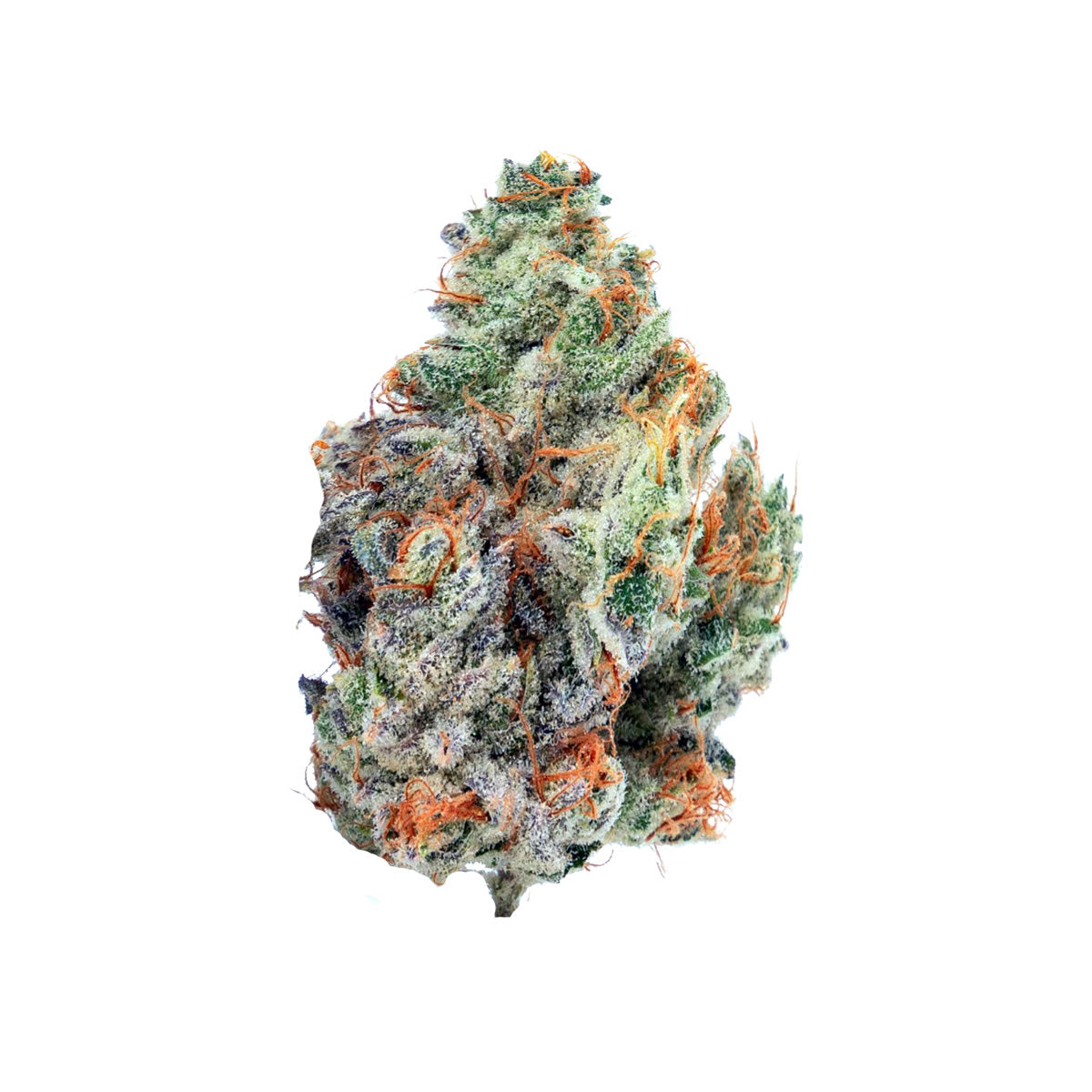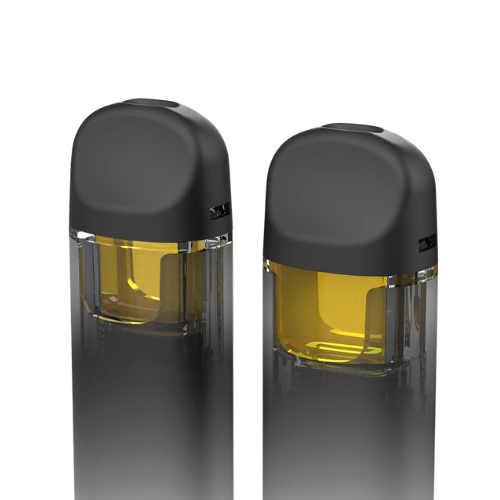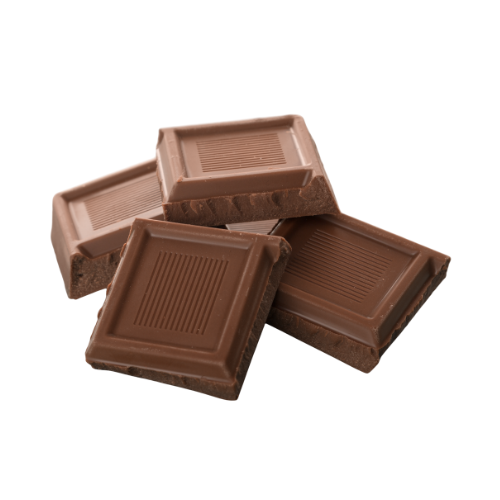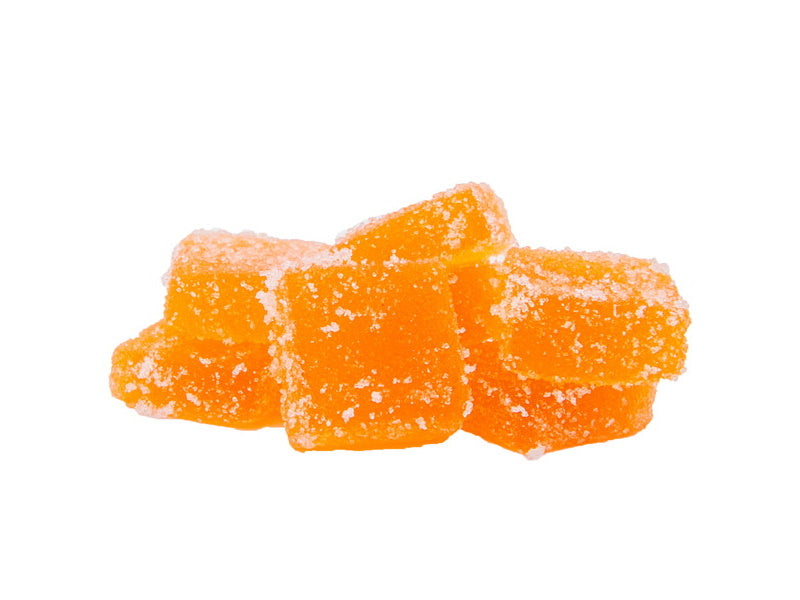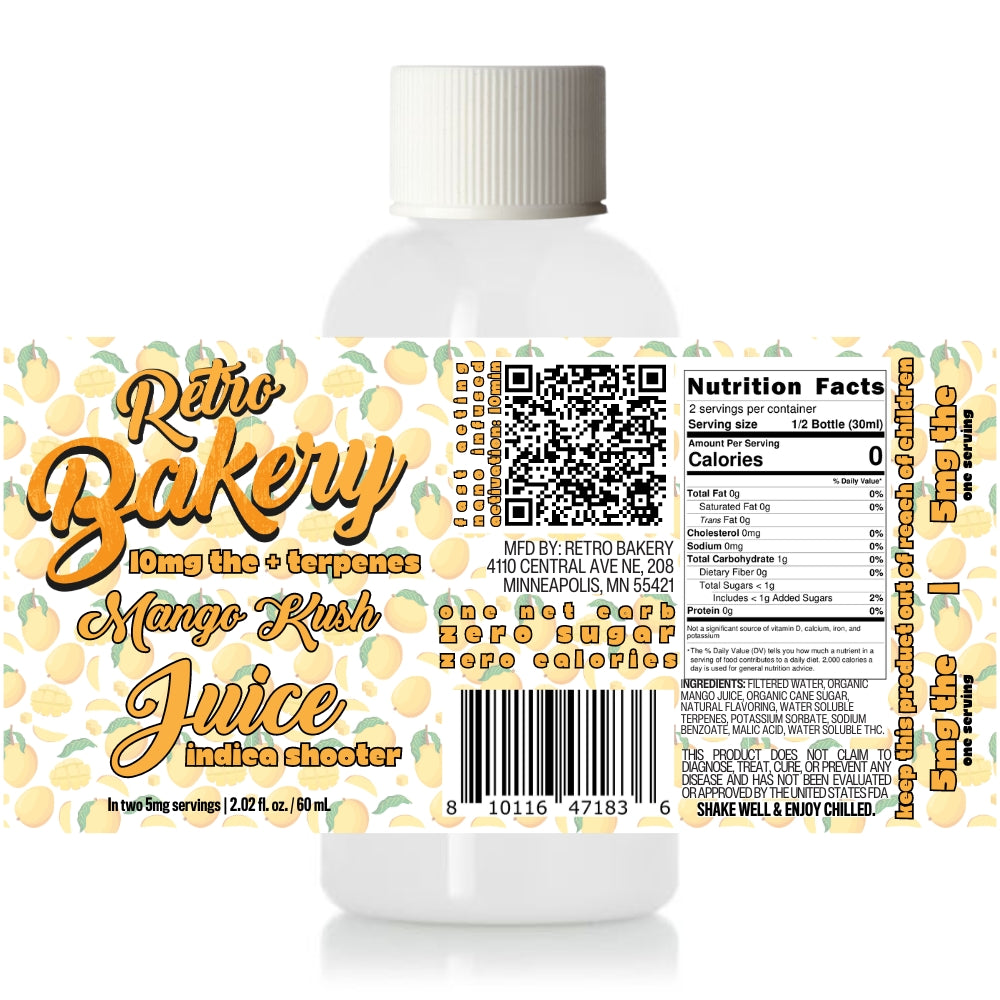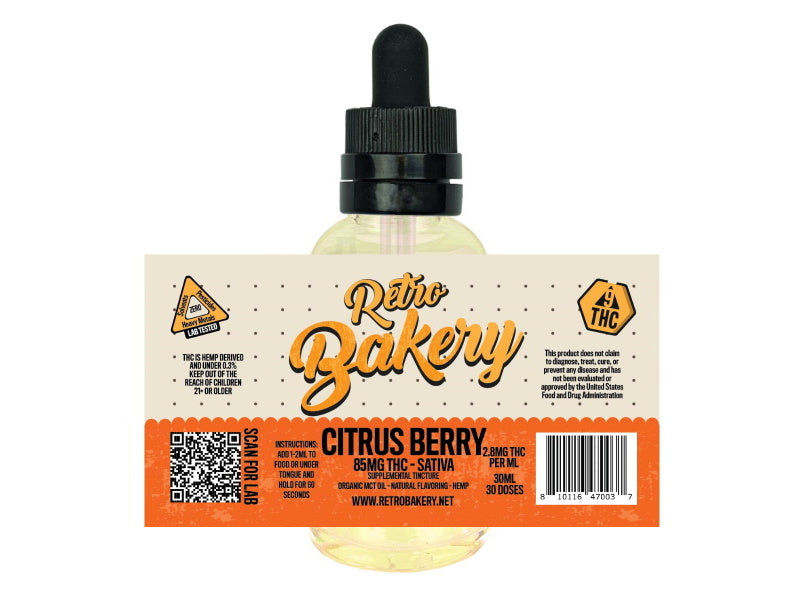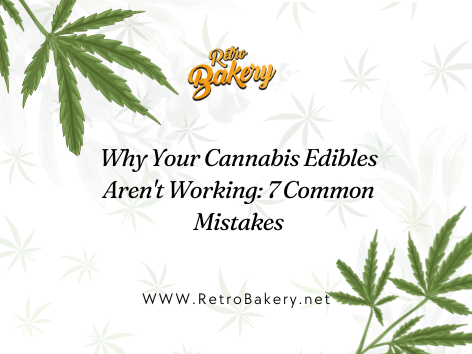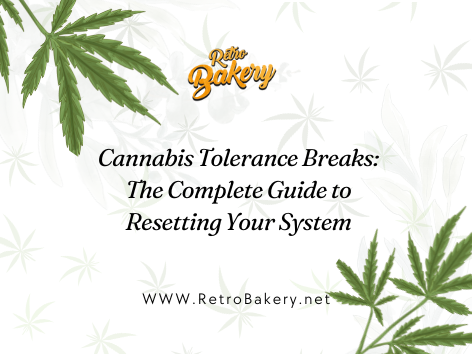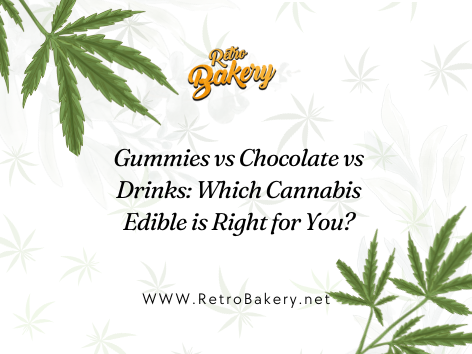THC and Creativity: How Cannabis Edibles Are Fueling Artists, Musicians and Writers
Key Takeaways
-
Scientific research shows cannabis can enhance feelings of creativity through complex effects on brain chemistry, with users reporting higher originality but sometimes at the cost of practicality
-
Microdosing THC (2.5-5mg) has emerged as a preferred approach for many creative professionals seeking inspiration without impairment
-
Different creative disciplines benefit from specific edible types, visual artists often prefer longer-lasting chocolate edibles, while musicians may opt for faster-acting options
-
While 35% of programmers have tried working under the influence of cannabis, research suggests THC may sometimes enhance perceived creativity more than actual creative output
-
Responsible consumption, finding your optimal dose, and understanding how different edible formats affect your creative process are crucial for positive results
Have you ever wondered why so many painters keep cannabis-infused chocolates in their studios? Or why certain musicians reach for THC gummies before improvisation sessions? The connection between cannabis and creativity isn't just anecdotal folklore, it's a growing cultural movement backed by emerging science and refined by intentional practice.
When the legendary jazz musician Louis Armstrong once said his creativity was fueled by his "gage," as he called cannabis, he couldn't have envisioned a future where precisely dosed edibles would transform how creators across disciplines approach their craft. Yet here we are, witnessing a renaissance where THC-infused products aren't just recreational indulgences but deliberate tools in the creative arsenal of professionals.
Recent research found that 35% of programmers have tried coding while using cannabis, with 18% doing so monthly, and this trend extends far beyond tech into traditional artistic domains. Today's creatives aren't just getting high; they're integrating cannabis edibles into sophisticated routines designed to enhance specific aspects of their creative process.
Let's explore this fascinating intersection of THC and creativity, examining not just the science behind the high, but the intentional practices, product preferences, and cultural shifts making edibles a staple in studios, writing rooms, and recording spaces nationwide.
The Historical and Cultural Tie Between Cannabis and Creativity
Cannabis Through the Ages in Artistic Circles
The relationship between cannabis and creativity stretches back centuries, woven through cultural and artistic movements like colorful threads in a tapestry. From the jazz age of the 1920s and 30s, when musicians created revolutionary sounds with cannabis as their companion, to the 1960s counterculture that produced some of our most enduring art and music, cannabis has long been associated with creative expression.
But what's changed dramatically is how creators consume. The smoke-filled backstage areas and hazy studio sessions have increasingly given way to discreet edibles with precise dosing. This shift from smoking to eating represents more than just a change in delivery method, it signals a more intentional, controlled approach to using cannabis as a creative tool rather than simply a recreational substance.
The Rise of Edibles in Creative Communities
Why have edibles become the preferred choice for so many artists, musicians, and writers? The answers reveal much about today's creative professionals and their approach to their craft.
First, edibles offer discretion. A composer can enjoy a 5mg THC-infused chocolate before a scoring session without the stigma or telltale scent of cannabis smoke. Second, edibles provide predictable, controlled dosing, critical for creative professionals who need to maintain functionality. When a painter takes a 2.5mg microdose gummy, they know exactly what effect to expect and for how long.
Third, and perhaps most important for creative work, is the duration of effects. While smoked cannabis peaks quickly and fades, edibles provide a steadier, longer-lasting experience ideal for sustained creative sessions. A writer working on a difficult chapter might benefit from 3-4 hours of gentle THC influence rather than the sharp peak and quick decline of smoked cannabis.
"I switched to low-dose edibles because they match my painting sessions," explains one professional illustrator who has integrated THC into their creative routine. "I need sustained focus for hours, not an intense high that fades while I'm still working."
The Science: Can THC Really Boost Creative Thinking?
What Research Says About Cannabis and the Brain
Behind the anecdotes and cultural associations lies a fascinating scientific story about how THC interacts with our brain's creative machinery. Research consistently shows that cannabis users claim enhanced creativity when using THC, but is this perception backed by measurable changes in creative output?
The answer involves understanding two types of thinking essential to creativity:
Divergent thinking allows us to generate multiple solutions and unusual connections, the "brainstorming" phase of creativity. THC affects this by temporarily reducing the filtering function of our prefrontal cortex, allowing more unusual associations to form.
Convergent thinking helps us evaluate those ideas and select the most promising ones, the "editing" phase. This can sometimes be impaired by higher doses of THC.
A 2017 study found that cannabis users not only self-reported higher creativity but actually performed better on convergent thinking tasks compared to non-users. The researchers suggested this might be related to cannabis's effects on dopamine release, which plays a crucial role in cognitive flexibility and creative thinking.
Nuanced Perspectives: Benefits, Drawbacks, and Placebo Effect
The relationship between THC and creativity isn't straightforward. THC can enhance certain creative aspects while potentially hindering others, depending on dosage, individual tolerance, and the creative task at hand.
A particularly revealing 2021 study examined how cannabis users generated new business ideas. The researchers found that cannabis users consistently came up with more original ideas, but those ideas were often rated as less feasible or practical. This highlights a key consideration for creative professionals: cannabis might help you think outside the box, but it might also make it harder to judge which ideas can actually work in the real world.
The placebo effect also plays a significant role. A 2022 study found that while cannabis use didn't objectively increase creativity, it positively biased users' evaluations of their own creative work. In other words, THC might make you feel more creative without actually enhancing your creative output, a critical distinction for professionals whose work faces external evaluation.
The Importance of Dosing and Product Choice
Perhaps the most important scientific finding for creative professionals is that dosage matters tremendously. Research has shown that high-potency cannabis can actually impair divergent thinking in regular users, suggesting that when it comes to creativity, more isn't necessarily better.
This finding has fueled the growing practice of microdosing, using small amounts of THC (typically 2.5-5mg) to access creativity-enhancing effects while minimizing impairing ones. For creative professionals, finding that sweet spot where THC enhances ideation without compromising execution has become a personal science.
The type of product also influences the creative experience. Understanding the proper dosage for beginners is crucial, with most experts recommending starting with just 2.5-5mg of THC for creative purposes. Different edible formats, chocolates, gummies, drinks, or infused sugar, affect onset time and duration, creating distinct creative experiences that makers have learned to match to their process.
Behind the Studio Door: Artists, Musicians, and Writers Share Their THC Routines
The Visual Artist's Ritual
For visual artists, cannabis edibles often serve as a gateway to a state of uninhibited expression. Many painters and illustrators report that low-dose edibles help quiet the inner critic that can stifle creative exploration.
"I take 5mg of THC chocolate about an hour before I start painting," explains a professional watercolorist who has developed a precise ritual. "It's just enough to loosen my perception without affecting my technical ability. Colors seem more vivid, and I make connections in my work I might otherwise miss."
Interestingly, many visual artists prefer chocolate edibles over gummies or other formats when working on longer projects. The fat content in chocolate can actually affect how THC is metabolized, potentially providing a more gradual, sustained creative enhancement ideal for painting sessions that might last several hours.
Digital artists and illustrators often report using even smaller doses, sometimes as little as 2.5mg, to maintain the technical precision their work demands while still accessing cannabis's creativity-enhancing effects.
The Musician's Creative Zone
For musicians, THC edibles often serve different creative purposes: enhancing improvisational flow, breaking through songwriter's block, or finding new sonic textures during production sessions.
Unlike visual artists, who often prefer longer-lasting edibles for sustained work sessions, musicians frequently opt for faster-acting products that align with the often spontaneous nature of musical creation. Many report using refreshing options like THC-infused gummies soon before improvisation sessions to enhance their musical expression.
"I don't use cannabis for performances, but during writing sessions, a small dose helps me get out of predictable patterns," explains a professional guitarist who has integrated microdosing into his songwriting process. "When I'm stuck on a composition, 5mg of THC can often help me hear the music differently."
For recording sessions, precision matters, which is why many musicians have dialed in very specific doses and products. One session drummer reports using 2.5mg THC gummies for rhythm tracking to enhance his feel without affecting his timing. Several producers note that small amounts of edibles help them notice subtle details in mixes they might otherwise overlook.
The Writer's Edible-Infused Routine
Writers perhaps have the longest documented history with cannabis, and many contemporary authors, screenwriters, and journalists have refined specific "cannabis writer routines" that help them overcome blocks and enhance creativity without compromising clarity.
"I use 5mg of THC, usually from a consistent edible product, when I'm generating new ideas or writing first drafts," explains one novelist who has integrated cannabis into her creative practice. "But I always edit sober, the critical thinking required for revision is different from the free association helpful in drafting."
This separation of cannabis use by creative stage is common among writers. Many report that edibles help them silence internal criticism during initial creation but might hinder the analytical thinking needed during editing and revision.
Writers also frequently mention using cannabis to step outside their typical voice or perspective. One screenwriter reports using low-dose edibles specifically when writing characters whose viewpoint differs dramatically from his own, finding that THC helps him break from his default thought patterns.
Microdosing for Creativity: Art Meets Science
Microdosing Basics: What It Is and Why Artists Favor It
The growing trend of microdosing, consuming sub-perceptual amounts of cannabis, has found particular resonance in creative communities. But what exactly constitutes a microdose, and why has this approach gained such traction among artists?
A THC microdose typically ranges from 1-5mg, an amount subtle enough to avoid significant impairment while still providing gentle cognitive effects. This contrasts sharply with recreational use, which often involves doses of 10mg or higher, seeking pronounced psychoactive effects.
This scaled-back approach provides several benefits for creative work:
-
Subtle perceptual shifts without significant impairment
-
Maintained technical ability crucial for executing creative ideas
-
Extended productive periods without the crash that can come from higher doses
-
Consistent, repeatable effects that can be integrated into creative routines
Many creatives report that microdosing products offer the perfect balance, just enough THC to enhance creative thinking without overwhelming cognitive function or technical ability. This precision approach represents a significant shift from older cannabis culture, emphasizing intentional, functional use over recreational intoxication.
Edibles vs. Smoking: How Delivery Affects the Creative Process
The method of cannabis consumption dramatically impacts the creative experience, which is why many professional creatives have shifted decisively toward edibles.
The differences between edibles and smoking create distinct creative experiences. When THC is inhaled, effects begin within minutes but typically last only 1-3 hours. Edibles, by contrast, take longer to onset (30-90 minutes) but provide effects lasting 4-8 hours.
This extended duration makes edibles particularly well-suited for sustained creative sessions. A writer working on a complex chapter, a painter completing a large canvas, or a musician in a day-long studio session benefits from the steady, extended effects edibles provide rather than the peaks and valleys of smoked cannabis.
Additionally, edibles transform THC through liver metabolism into 11-hydroxy-THC, which crosses the blood-brain barrier more readily than regular THC, creating effects many users describe as more introspective and idea-generating, potentially ideal for creative work.
This chart illustrates the key differences creators should consider:
|
Feature |
Edibles |
Smoking/Vaping |
|
Onset Time |
30-90 minutes |
2-10 minutes |
|
Duration |
4-8 hours |
1-3 hours |
|
Effect Type |
More body-centered, introspective |
More cerebral, immediate |
|
Dosage Control |
Precise, consistent |
Variable, harder to standardize |
|
Discretion |
Complete |
Limited (odor, visible) |
|
Creative Benefit |
Sustained focus, deep work |
Quick inspiration, rapid iteration |
For most creative professionals, the predictability and duration of edibles make them the preferred choice for serious work sessions, while smoking might be reserved for quick brainstorming or ideation.
Product Recommendations: Tailoring Edible Choices to Creative Pursuits
Best Edibles for Visual Artists
Visual artists often benefit from products that provide steady, sustained effects while enhancing sensory perception, particularly visual processing. Their work frequently requires extended focus combined with uninhibited expression.
For painting and traditional media: Medium-acting chocolate edibles in the 5-10mg range often provide the ideal balance. The fat content in premium THC chocolate bars can help smooth and extend the experience, ideal for painting sessions lasting several hours. Dark chocolate varieties with higher cacao content may offer additional cognitive benefits through naturally occurring compounds that complement THC's effects.
For detailed illustration and digital art: Lower-dose options (2.5-5mg) help maintain the precision these mediums require while still enhancing creative thinking. Precisely dosed gummies or infused sugar that can be added to tea allow for careful control, helping digital artists access creative benefits without sacrificing the technical focus their work demands.
A watercolor artist shared: "I need to maintain brush control while still accessing a more creative headspace. A 5mg chocolate square about 45 minutes before I start working gives me the perfect balance."
Musicians and THC: Sativa Gummies & Infused Drinks
Musicians often benefit from products that enhance auditory processing and emotional connection to sound without impairing technical execution or timing.
For composers and songwriters: Products with moderate doses (5-10mg) can help break through creative blocks and establish new musical connections. Many composers report using hybrid-effect edibles that provide both mental stimulation and relaxation, helping them generate ideas while remaining focused enough to document them.
For performers and session musicians: Lower-dose, faster-acting options like THC-infused beverages (2.5-5mg) provide subtle enhancement with minimal physical impairment. These products can help performers connect emotionally with the music while maintaining the technical proficiency their craft demands.
Many musicians prefer products with onset times they can predict precisely, allowing them to time the effects with specific creative or performance moments. One guitarist reported: "I know exactly when a 5mg lemonade shot will kick in, so I can time it perfectly for when we start the improvisation section of our recording session."
Writers: Balancing Focus and Flow
Writers face the unique challenge of balancing free-flowing creative generation with structured, logical organization, often requiring different cognitive states.
For first drafts and idea generation: Hybrid-effect edibles in the 5mg range often provide the ideal balance of uninhibited thinking and maintained verbal ability. Many writers report that low-dose chocolate or gummy edibles help silence their inner critic during first drafts, allowing ideas to flow more freely.
For editing and revision: Even lower doses (1-2.5mg) or CBD-balanced products help maintain analytical thinking while still providing subtle creative enhancement. Some writers use microdose products specifically for editing, finding that very low doses help them see their work from fresh perspectives without clouding judgment.
Writers frequently emphasize the importance of product consistency, as regular writing routines benefit from predictable effects. One novelist shared: "I use the same 2.5mg gummy every time I sit down for my morning writing session. The consistency helps me establish a reliable creative routine."
Responsible Use and Potential Downsides
A Word on Feasibility: When Creativity Overflows Meets Real World Constraints
While THC can enhance creative thinking, research reveals an important caveat: cannabis use may boost originality while reducing the feasibility of ideas. This insight has practical implications for creative professionals whose work must ultimately function in the real world.
A designer who creates under the influence of cannabis might generate truly innovative concepts, but may need to critically evaluate their practicality during a sober review session. Musicians might create boundary-pushing compositions while using THC but should later assess whether the music communicates effectively to their audience.
This highlights the wisdom of separating creative processes: using THC during ideation and exploratory phases, then approaching evaluation and refinement with clear-headed analysis. Many successful creative professionals maintain this separation, using cannabis to spark ideas but relying on sober judgment to shape those ideas into viable final products.
Avoiding Pitfalls: Overuse, Tolerance, and Health Considerations
For creative professionals using cannabis as a tool rather than a recreational substance, maintaining effectiveness requires awareness of potential pitfalls.
Tolerance development can diminish cannabis's creative benefits over time. Many artists report scheduling regular breaks from THC to maintain sensitivity to its effects. Some follow a pattern of using cannabis only during specific creative phases or limiting use to 2-3 days per week to prevent tolerance buildup.
Dependency concerns are also relevant, relying exclusively on cannabis for creativity can become problematic. "I make sure I can create without it," explains one writer who uses THC strategically. "I view cannabis as one tool in my creative toolkit, not the foundation of my process."
Health considerations extend beyond the obvious. While the physical effects of THC edibles are generally well-documented, the mental health impact varies significantly between individuals. Those with anxiety disorders, for instance, might find that even low doses amplify rather than reduce creative blocks. Many artists emphasize the importance of understanding your unique response and adjusting accordingly.
For professional creatives, the key lesson is intentionality, approaching cannabis as a precision tool rather than a blanket solution, being mindful of personal response, and maintaining the ability to create effectively with or without its influence.
Conclusion: The Artful Balance of Cannabis and Creativity
The relationship between THC and creativity isn't simple inspiration or mere chemical stimulation; it's a nuanced dance between substance and creative process, between neural enhancement and practical execution. Today's artists, musicians, and writers aren't merely getting high; they're integrating cannabis edibles into sophisticated creative practices with intentionally chosen products, precise dosing, and strategic timing.
The science suggests cannabis can indeed influence creative thinking, potentially enhancing originality through disinhibition and unusual connections while sometimes affecting practicality and execution. The most successful creative professionals have learned to harness these effects selectively, often using different approaches for different stages of their process.
For those curious about exploring this intersection of cannabis and creativity, the path forward requires both openness and discipline: start with very low doses (2.5-5mg), pay close attention to how different products affect your specific creative process, maintain periods of creation without cannabis, and always evaluate your work with clear-headed perspective.
With this balanced approach, THC edibles can indeed become what so many working creatives have found them to be, not a creative crutch, but another color on the palette, another instrument in the orchestra, another technique in the writer's craft. In the thoughtful integration of cannabis into creative practice, we find not just altered perception, but an expanded creative toolkit for expression across artistic disciplines.
Ready to explore how THC might enhance your own creative journey? Browse our selection of creator-friendly edibles carefully crafted to support your artistic process, whatever form it takes.


